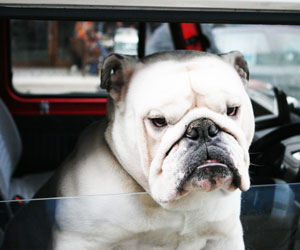Holiday Travelers Take Note: Scientists Explore Roadway Aggression
 It’s that time of year again – the time to gather with family and friends, to celebrate the passing of another year…to spend hours in a car dealing with pent-up roadway aggression?
It’s that time of year again – the time to gather with family and friends, to celebrate the passing of another year…to spend hours in a car dealing with pent-up roadway aggression?
According to the U.S. Department of Transportation, long-distance trips increase by 54% in the 6-day period surrounding Thanksgiving and by 23% in the weeks around Christmas and New Year’s. Most of those trips take place in personal automobiles.
Being stuck in traffic on a regular day is frustrating enough, but racing to be home for the holidays could make driving at this time of year a particularly fraught endeavor.
In a new article in Current Directions in Psychological Science, researcher Christine Wickens of the Centre for Addiction and Mental Health in Toronto and colleagues at York University investigate the factors that contribute to aggressive driving, and the measures we can take to alleviate it.
Based on the available literature, the researchers broadly conceptualize the contributors to aggressive driving into two factors: person-related factors and situation-related factors.
So, for example, research suggests that drivers who are young, who are high in “Type A” characteristics of competitiveness and achievement motivation, and who feel overwhelmed by incoming sensory information are more likely to be aggressive drivers.
At the same time, situation-related factors, such as cluttered urban roadways and offensive driving by others, contribute to driver stress and, ultimately, driver aggression.
While the majority of Americans seems to recognize the danger of aggressive driving, a significant proportion admits to bad driving practices, including tailgating and speeding to beat a yellow light.
So what can we do about it?
Programs with a therapeutic focus can help aggressive drivers to identify their triggers, recognize influential cognitive biases, and employ relaxation techniques to prevent feelings of roadway aggression.
Other programs take a more incentives-based approach. Some insurance companies, for example, are now allowing drivers to place a tracking instrument in their car – those who show “good driving” are offered a discount on their premium.
Psychological science can also help to address the problem from the enforcement side, helping police to target the right drivers at the right time. And it can inform the use of different technologies, such as photo radar, red-light cameras, and electronic message boards, in addressing driver aggression.
“Efforts to apply this information to modify driver aggression…are in their infancy but possess great potential for impact,” the researchers conclude.
So, if you’re driving long distances this holiday season, take some deep breaths and remember that, despite appearances, the other drivers aren’t all conspiring against you.
After all, it doesn’t matter how fast you can get there if you don’t get there in one piece!
![]()
Wickens, C.M., Mann, R.E., & Wiesenthal, D.L. (2013). Addressing driver aggression: Contributions from psychological science. Current Directions in Psychological Science, 22 (5), 386-391. DOI: 10.1177/0963721413486986





APS regularly opens certain online articles for discussion on our website. Effective February 2021, you must be a logged-in APS member to post comments. By posting a comment, you agree to our Community Guidelines and the display of your profile information, including your name and affiliation. Any opinions, findings, conclusions, or recommendations present in article comments are those of the writers and do not necessarily reflect the views of APS or the article’s author. For more information, please see our Community Guidelines.
Please login with your APS account to comment.